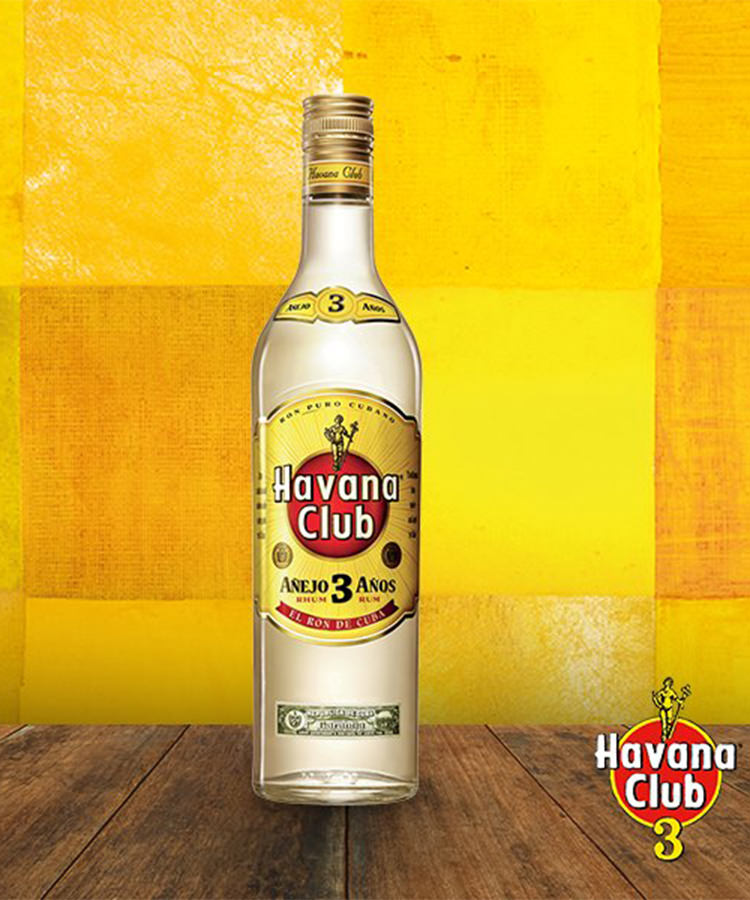Americans drink 40 percent of the world’s rum. There’s Bacardi, Sailor Jerry’s, Appleton Estate, the list goes on. What it does not include is arguably the best rum of them all: Havana Club rum from Cuba.
For 55 years, Americans have been starved of Havana Club. No Hemingway Daiquiris the way Papa had them at El Floridita, no Cuba Librés with liquor made from Cuba’s master rum makers, no Cuba anything, actually, thanks to the 1962 trade embargo on Cuban goods.
But I got a chance to try some real Havana Club 3 Year on a recent trip to Thailand. That $17 bottle convinced me that America needs a change in its selection of go-to rum brand. Havana Club is simply the best affordable rum brand out there.
Havana Club 3 Year is both thirst quenching and dry. It’s a light straw yellow from the barrel aging, which also gives it a tannic quality and a vanilla flavor. The 3 Year is designed for mixing, but there’s enough smooth sweetness for it to be drunk on its own as a sipping rum.
But Havana Club is about more than just the taste. It’s about Cuban authenticity. Judging by the farm-to-table craze, the virulent passion for craft beer over macro beer, and the love of all things handmade, I’m not the only one who craves a taste of authenticity. Havana Club is made by maestros roneros or master rum makers in Cuba. They distill molasses from Cuban sugar cane, and then blend different barrels for the optimum flavor. That’s a lot more authenticity than any other brand marketing itself as Cuban rum, and, like it or not, authenticity affects the drinking experience.
You know what else matters? History. The two dominant rums with Cuban heritage — Bacardi and Havana Club — both have long and colorful histories. Havana Club’s history is continuously rooted in the country of its origin, though. In the early 1900s, two families dominated rum production in Cuba: the Bacardis and the Arechabalas. That changed during the Cuban revolution led by Fidel Castro in 1959. Both families fled, but a rum made from the Arechabalas recipes continued to be made in Cuba by the state-owned Cuba Ron under the name Havana Club International.
In 1993, Havana Club International joined forces with Pernod Ricard. It’s since grown into the third most popular rum in the world with distribution in more than 120 countries — just not in the U.S. thanks to the 1962 trade embargo. And not being in the country where 40 percent of rum is consumed is big. That’s like Jeff Foxworthy getting famous without a single person in Alabama or Mississippi knowing his name. Bacardi, on the other hand, moved its production to Bermuda and dominated the U.S. and global market.
President Barack Obama loosened the Cuban trade embargo in 2016. Cuban cigars and rum can theoretically get across the border more easily, but that doesn’t mean you’ll see a flood of Havana Club in the U.S. In 1994, a year after Pernod Ricard partnered with Havana Club International, Bacardi took steps to brand the name “Havana Club” as a Bacardi product. It paid the remaining members of the Arechabala family $1.25 million for any rights associated with the name and brand “Havana Club” in the United States. The next two decades saw court and legislative battles over who gets to call their rum Havana Club until 2016, when Bacardi was granted a Havana Club trademark and released a “Havana Club” rum made in Puerto Rico.
The latest update on the lawsuits is that the original Havana Club could reapply for a U.S. trademark thanks to Obama’s order, but two Florida legislators are pushing to have the order reversed.
I say let the free market be free and keep politics out of rum. Cuban Havana Club is just as much a part of Cuban culture as Cuban cigars. And if history and culture aren’t enough to convince you to drink Havana Club, let the taste sway you.
Thinking you’re drinking authentic Cuban-style rum when you’re drinking Puerto Rican Bacardi is like thinking you’re drinking authentic Champagne made in California. Where something is from matters because where it’s from and what it’s made with affect the taste.
It just so happens that the real taste of Cuba is superior to the taste of “Cuban”-style rum made outside Cuba. Thanks to the government, you just have to get out of the U.S. to try it.
